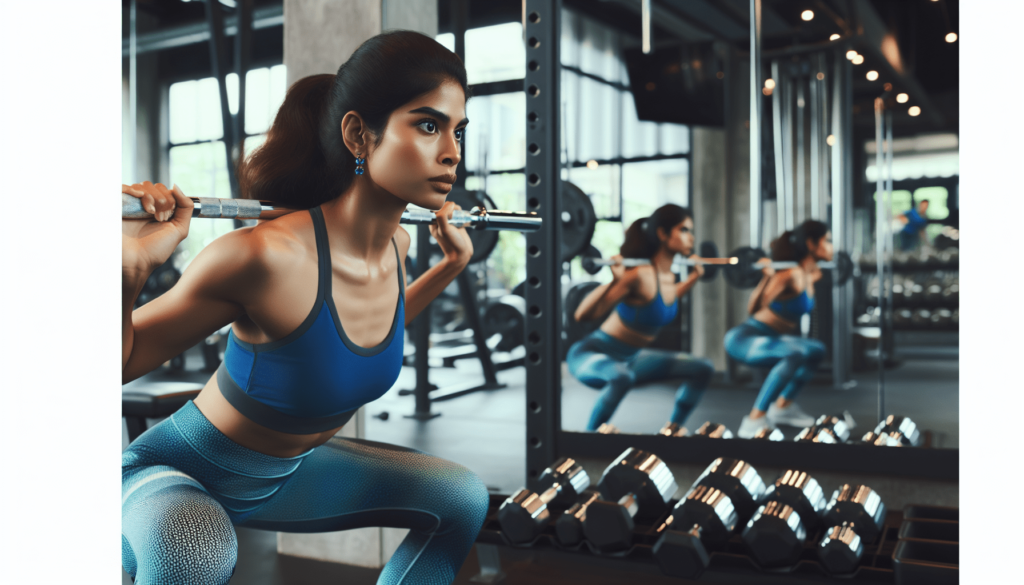Diving into the world of fitness can be truly exhilarating, and mastering the art of squats is a fantastic place to start. Squats are a powerhouse move that not only strengthen your legs but also enhance your core and support overall mobility. However, the key to reaping all these benefits lies in nailing the proper form. From your stance to your spine alignment, there are essential techniques to ensure you perform squats effectively and safely. So, let’s break down the best practices to help you enhance your squat game and protect yourself from potential injuries! Have you ever wondered why squats are hailed as one of the quintessential exercises in almost every fitness routine? It’s no mystery that squats are incredibly effective for building muscle, strength, and endurance. However, achieving the utmost benefits from squatting hinges greatly on your ability to master the correct form. So, what is the proper form for squats? Let’s break it down together and ensure that your squats are as effective and safe as possible.
Understanding Squat Basics
What Are Squats?
Squats are a compound exercise that targets several muscle groups in your lower body, including your quadriceps, hamstrings, glutes, and calves. Additionally, they help strengthen your core and can even aid in improving balance and coordination.
Why Is Proper Form So Important?
Mastering the proper form is crucial not only for maximizing the exercise’s effectiveness but also for avoiding injury. Incorrect squatting can put undue stress on your lower back, knees, and other joints, leading to strains, pains, and possibly more serious injuries.
The Squat Setup
Foot Position and Stance
The footing you adopt before you squat plays a significant role in the effectiveness of the exercise. Start by standing with your feet shoulder-width apart. You may find it more comfortable to position your feet slightly wider than shoulder-width. As for your toes, point them forward, or you can angle them outwards slightly (about 5 to 20 degrees). This helps maintain balance and aligns your knees with your toes as you move.
Eye Focus and Chest Position
Where you look while you squat can influence your balance. Fix your gaze straight ahead or slightly down. Avoid looking too high or too low, as this can misalign your spine. Your chest should be up and out, and your shoulders should stay back. This positioning helps keep your back in a neutral position and avoids any rounding that can lead to lower back injuries.

Executively Performing a Squat
The Descent
To commence the squat, think about sitting back with your hips, not just bending your knees. As you lower yourself, here’s what to keep in mind:
- Hips Back: Initiate the movement by pushing your hips back.
- Knees Follow: Bend your knees after your hips start moving back. They should move in line with your feet.
- Depth: Aim to lower yourself until your thighs are parallel with the floor. However, depth can vary based on mobility, strength, and comfort.
- Keep Heels Grounded: Ensure your heels don’t lift off the ground. Keeping the weight distributed through your heels and midfoot encourages better stability and power.
The Ascent
Now, it’s time to return to the starting position:
- Drive Through Your Heels: Focus on pushing the floor away through your heels and midfoot.
- Straighten Your Legs and Hips: Extend your knees and hips simultaneously to rise back up.
- Keep Core Engaged: Throughout the movement, keep your core tight. This secures your spine and reduces the risk of injury.
Common Mistakes and How to Correct Them
Knowing common squat mistakes can help refine your technique. Let’s address a few:
1. Knees Caving In
This happens when your knees buckle inward during the squat, which can be harmful over time.
- Correction: Strengthen your glutes and thighs. Focus on pushing your knees slightly outward as you squat, aligning them with your toes.
2. Inadequate Depth
Shallow squats might not fully engage the intended muscle groups.
- Correction: Work on flexibility if depth is an issue. Practicing without weights or using a shallower depth until you build the mobility and strength for deeper squats can also help.
3. Improper Weight Distribution
If your heels come off the floor, it puts extra stress on your knees and lowers back.
- Correction: Keep your weight balanced between the heels and midfoot. If balance is a problem, try squatting without weights until you feel more stable.

Variations of Squats for Different Fitness Levels
To keep your workouts exciting and challenging, incorporating different squat variations is key:
- Bodyweight Squat: Great for beginners or as a warm-up for all levels.
- Sumo Squat: Involves a wider stance and is great for focusing more on the inner thigh muscles and glutes.
- Goblet Squat: Performed with a dumbbell or kettlebell, helping improve your frontal load-bearing capacity.
- Jump Squat: Adds a plyometric boost to the classic squat which aids in developing explosive strength and burns calories.
Choosing the Right Variation
Evaluate your fitness level, experience, and overall health when choosing a squat variation. Beginners might start with bodyweight squats or goblet squats, while more experienced individuals can experiment with jump squats and other advanced types.
Integrating Squats Into Your Workout Routine
Adding squats to your routine isn’t just about throwing them in randomly. Here’s how to strategically add them:
- Warm-Up Properly: Engage your muscles with a thorough warm-up before diving into squats.
- Combine With Other Exercises: For a balanced workout, combine squats with exercises that target the upper body and core.
- Gradually Increase Intensity: As you become more comfortable with squats, gradually increase the weight or the number of repetitions to continue challenging your muscles.
Conclusion
Mastering the proper form for squats is essential for effective workouts and preventing injuries. By paying attention to your body alignment, practicing regularly, and gradually increasing your squatting intensity, you can safely enjoy the benefits of this powerful exercise. Remember, consistency is key, and improvement takes time, so keep at it. Your effort will undoubtedly pay off!
